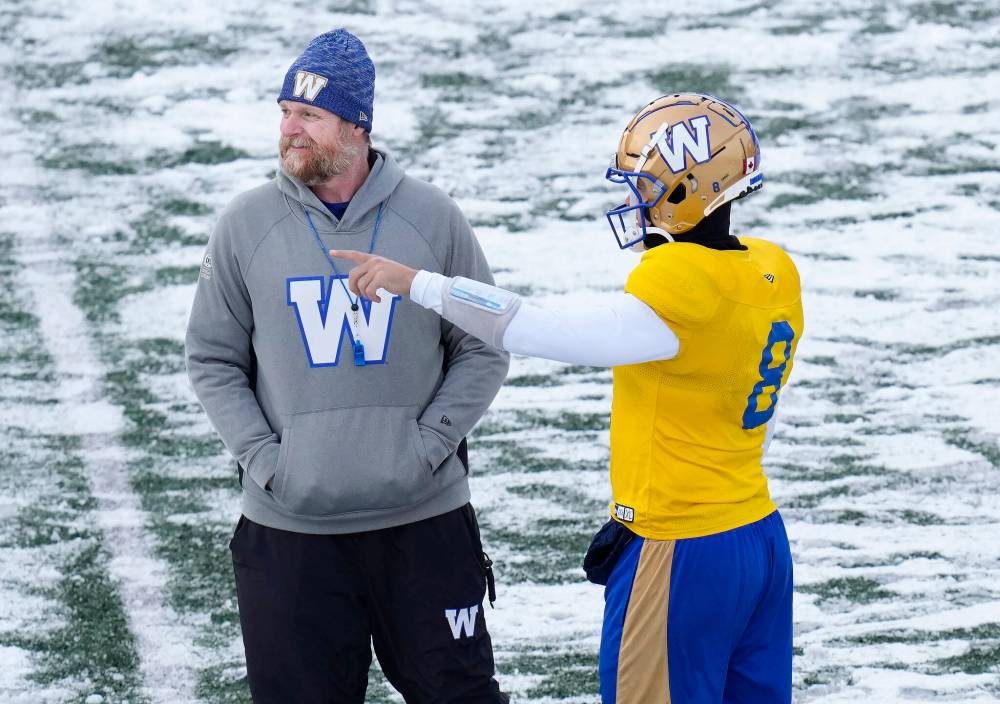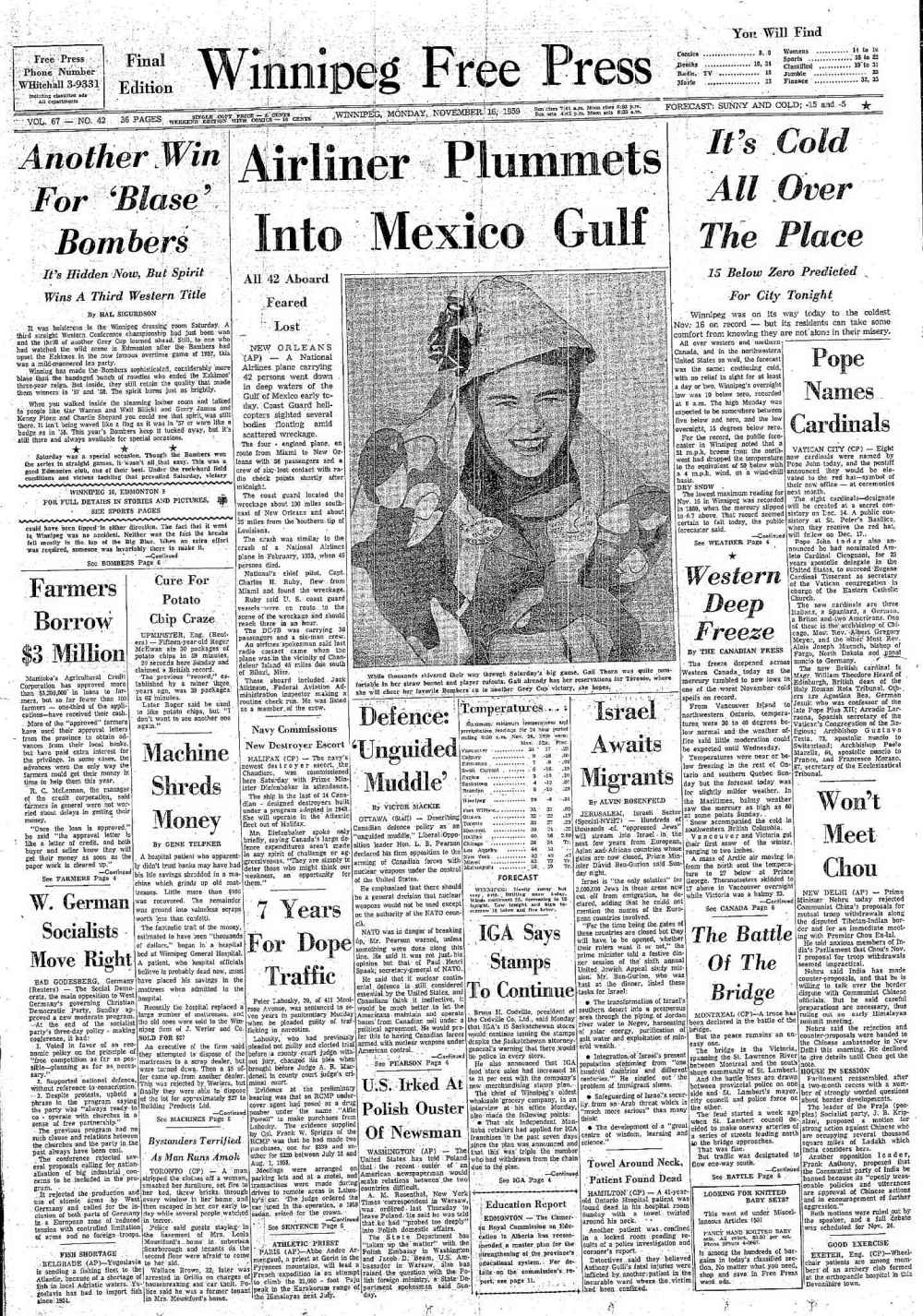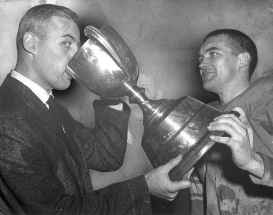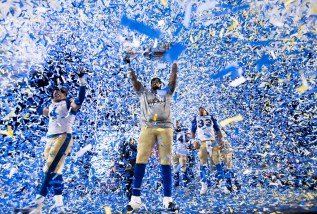Talkin’ dynasty Mike O’Shea’s Blue Bombers have chance to be mentioned in same breath as Bud Grant’s after Sunday’s Grey Cup
Read this article for free:
or
Already have an account? Log in here »
To continue reading, please subscribe:
Monthly Digital Subscription
$0 for the first 4 weeks*
- Enjoy unlimited reading on winnipegfreepress.com
- Read the E-Edition, our digital replica newspaper
- Access News Break, our award-winning app
- Play interactive puzzles
*No charge for 4 weeks then price increases to the regular rate of $19.00 plus GST every four weeks. Offer available to new and qualified returning subscribers only. Cancel any time.
Monthly Digital Subscription
$4.75/week*
- Enjoy unlimited reading on winnipegfreepress.com
- Read the E-Edition, our digital replica newspaper
- Access News Break, our award-winning app
- Play interactive puzzles
*Billed as $19 plus GST every four weeks. Cancel any time.
To continue reading, please subscribe:
Add Free Press access to your Brandon Sun subscription for only an additional
$1 for the first 4 weeks*
*Your next subscription payment will increase by $1.00 and you will be charged $16.99 plus GST for four weeks. After four weeks, your payment will increase to $23.99 plus GST every four weeks.
Read unlimited articles for free today:
or
Already have an account? Log in here »
Hey there, time traveller!
This article was published 18/11/2022 (1115 days ago), so information in it may no longer be current.
The images couldn’t be more striking.
In the late 1950s, a clean-shaven Bud Grant patrolled the Blue Bombers’ sideline in a suit and tie, his piercing eyes surveying the football field.
Today, it’s the shaggy-bearded Mike O’Shea — in a hoodie and with hooded eyes peeking out from under a ball cap — calling the shots.
Different times, different eras.
And then there’s the respective quarterbacks — a baby-faced Kenny Ploen when he first started working his magic behind centre for Grant, and an older, more muscular Zach Collaros doing the same for O’Shea.
Two sets of men separated by six-plus decades but bonded by one outcome — unparalleled excellence.
The Grant-Ploen era is one of the greatest dynasties in CFL history. O’Shea and Collaros have also been very good, but it’s too soon to bestow the word ‘dynasty’ upon them. Will it change after Sunday night?
It’s a word that gets thrown around liberally in sports these days.
Win two championships in a row, or three in a span of, say, six years, and some fans are only too eager to anoint their team as the latest dynasty.
Shouldn’t a team need sustained success — championships, that is — for more than a couple of years to qualify as a dynasty?
Shouldn’t the gold standard be something like the five Stanley Cups in a row won by the Montreal Canadiens between 1956 and 1960? Or the five consecutive Grey Cups of the CFL’s Edmonton franchise between 1978 and 1982?
Mike O'Shea with QB Zach Collaros. (Nathan Denette / Winnipeg Free Press files)
Or how about the ultimate dynasties in North American sports? The Boston Celtics: 11 NBA championships in 13 years, including eight in a row. Or the UCLA Bruins: 10 U.S. college basketball titles in a dozen years. Heck, coach John Wooden’s teams lost only 22 games over those 12 years, including a seven-year span where fans went home sad just five times (and celebrated 205 victories).
Still, if the Blue Bombers manage to win their third consecutive Grey Cup on Sunday, they will legitimately ascend into the ranks of teams worthy of being considered dynasties.
Winning two titles in a row is difficult but not impossible — it’s happened twice in the CFL over the past five decades, in addition to the magical run in the late 1970s and early 1980s by Edmonton’s Warren Moon, Tom Wilkinson, Hugh Campbell, et al. But “three-peats” have always been rare, even in the days before salary caps and free agency made team-building more complicated and unpredictable.
Three Cups in a row would certainly put this era’s Bombers into that conversation.
But how does this edition of the Big Blue stack up against the greatest era in team history — the period between 1957 and 1965 when the Bombers went to six Grey Cups, and won four? Now, that was a powerhouse team worthy of the dynasty label.
The Blue Bombers of the late 1950s and early 1960s captured the imaginations of fans not just in Manitoba but across the country. Their reign of dominance also sparked a bevy of customized lyrics to popular songs, as published by the Free Press in souvenir editions of the day.

Like this one, to the tune of Glow Worm: “Show those Eskies who the boss is/Throw Jackie Parker for big losses/We’d like a team with lots of gumption/To represent us at this function.” (“This function” being the 1959 Grey Cup, in which the Bombers did indeed represent Winnipeg. And won, of course.)
The Blue Bombers battled the Hamilton Tiger-Cats for Canadian football supremacy almost every year in that era: 1957, ’58, ’59, ’61, ’62 and ’65. Winnipeg won four times in five years, losing bookend matches in ’57 and ’65.
Many of the Bombers lamented they coulda/shoulda won five in a row if not for a stunning defeat in 1960. Perhaps the best Bomb squad ever, with 14 wins in a 16-game schedule, they managed to lose the three-game Western Final series. (Teams had a tougher road to the Cup back then.)
It wasn’t just the loss that stung, but the way it happened. Clinging to a 2-1 lead in the final minute of the third game, Ploen took the ball on a quarterback keeper. All he had to do was maintain possession and Winnipeg could run out the clock.
But Ploen made the mistake of carrying the ball in his right hand, which had a broken bone. The ball got knocked loose and recovered by Edmonton, which then kicked a game-winning field goal.

Grant, the Bombers’ head coach of the era and a legend on both sides of the border, later lamented: “I remember standing on the sidelines thinking my friends in the States are never going to understand a 2-1 football game. The score ended up 4-2, not much better, and Edmonton won. But that was probably our best team.”
That loss put only a temporary hold on Big Blue’s run of excellence. After losing the 1957 Grey Cup in Grant’s first year as head coach, they took revenge on the Tiger-Cats — and shut up Hamilton coach Jim Trimble — the following year with a 35-28 win in a game that until the late 1980s was often considered the greatest Grey Cup ever played.
Before that game, Trimble made a remarkably cocky, and utterly bizarre, prediction: “we’ll waffle ’em.”
“Waffle?” asked a reporter.
“You want me to keep telling people we’ll beat ’em, or we’ll whomp ’em? Do I hafta draw a picture so you guys can understand what I’m saying?”

That, of course, sparked a musical response the following year. To the tune of Hang Down Your Head, Tom Dooley: “Hang down your head, Jim Trimble/Hang down your head and cry/You said you’d eat the Bombers/Now eat your humble pie.”
The Bombers of that era had several individuals who decades later are still revered by the team’s fans. Like Grant, an athlete talented enough to play in both the NBA and the NFL before catching passes for Winnipeg, and then becoming head coach at age 29.
His penetrating blue eyes, prematurely silver hair and taciturn manner — “If you don’t want to talk hunting or fishing or football, there’s not much left as far as he’s concerned,” said one of his players, Frank Rigney — disguised a football intellect second to none. When he left Winnipeg to take over the NFL’s Minnesota Vikings in 1967, legions of Winnipeggers pledged their allegiance to the Vikes.
Or Ploen, seldom an all-star but renowned for one overriding attribute. “Kenny Ploen set no records and won no awards,” wrote CFL historian Graham Kelly. “All he did was win.”

Or flashy running back Leo Lewis, the “Lincoln Locomotive.” Or Gerry James, “Kid Dynamite” who played for both the Bombers and the Toronto Maple Leafs. Or Buddy Tinsley, a burly lineman who reputedly almost drowned on the field during the “Mud Bowl” Grey Cup game of 1950 before being rolled over by referee Hec Crighton. “I wasn’t unconscious,” Tinsley later insisted. “I was mad.”
Starting as it did with back-to-back Grey Cup wins over Hamilton, the Bombers’ recent run shows some similarities to the dynasty that began taking shape 65 years ago.
O’Shea seems to channel Grant in both disposition and intellect. Much like Ploen, all Collaros has done since coming to Winnipeg is win, although unlike his award-bereft predecessor, Collaros was named the CFL’s most outstanding player on Thursday night.
As good as they were in the ’50s and ’60s, those Bomber teams might not have had defenders as stout and dominant as Adam Bighill and Willie Jefferson from the squad’s current iteration.
And as good as they were then, Bombers fans know all too well how fleeting it can be.
The Bombers went 22 years before their next championship, in 1984. Followed by wins in 1988 and 1990, the club went another 29 years before sipping champagne again in 2019.
Today, a bronze statue at Investors Group Field honours Grant for his legendary career. Cal Murphy, mastermind behind Bomber championships of 1984, 1988 and 1990, also has a statue at the stadium celebrating him.
If the Bombers win their third straight CFL title on Sunday, it would be far too soon to start measuring O’Shea for a statue.
But at the very least, Winnipeggers can start calling them a dynasty worthy of their predecessors.
— Paul Woods is a journalist and author of Bouncing Back: from National Joke to Grey Cup Champs and Year of the Rocket: John Candy, Wayne Gretzky, a Crooked Tycoon, and the Craziest Season in Football History.






